Magnetic Charge Model for Leakage Signals from Surface Defects in Ferromagnetic Material
Abstract
:1. Introduction
2. Rectangular Magnetic Dipole Theoretical Model
3. Modeling of Cracking Defects
3.1. Cylindrical Hole-Shaped Defect
3.2. Circular Truncated Hole Defect
3.3. Conical Hole-Shaped Defect
3.4. Elliptical Hole-Shaped Defect
3.5. Double-Curve-Shaped Crack Hole Defect
4. Comparison and Validation of Theoretical Models
5. Materials and Methods
5.1. Metal Magnetic Memory Simulation
5.2. Experimental Verification and Analysis
6. Results
7. Conclusions
8. Discussion
Author Contributions
Funding
Institutional Review Board Statement
Informed Consent Statement
Data Availability Statement
Acknowledgments
Conflicts of Interest
References
- Wang, C.L.; Chen, Z.L.; Ma, X.L. Visualization Technology of Defect in Magnetic Flux Leakage Testing; National Defense Industry Press: Beijing, China, 2014. [Google Scholar]
- Shi, P.P.; Hao, S. Analytical solution of magneto-mechanical magnetic dipole model for metal magnetic memory method. Acta Pet. Sin. 2021, 70, 34101. [Google Scholar] [CrossRef]
- Pengpeng, S. Analytical solutions of magnetic dipole model for defect leakage magnetic fields. NDT 2015, 91, 399–404. [Google Scholar]
- Mandache, C.; Clapham, L. A model for magnetic flux leakage signal predictions. J. Phys. D Appl. Phys. 2003, 36, 2427–2431. [Google Scholar] [CrossRef]
- Suresh, V.; Abudhahir, A.; Daniel, J. Development of magnetic flux leakage measuring system for detection of defect in small diameter steam generator tube. Measurement 2017, 95, 273–279. [Google Scholar] [CrossRef]
- Taniguchi, T. An analytical computation of magnetic field generated from a cylinder ferromagnet. J. Magn. Magn. Mater. 2018, 452, 464–472. [Google Scholar] [CrossRef]
- Trevino, D.A.G.; Dutta, S.M.; Ghorbel, F.H.; Karkoub, M. An Improved Dipole Model of 3-D Magnetic Flux Leakage. IEEE Trans. Magn. 2015, 52, 1–7. [Google Scholar] [CrossRef]
- Pengpeng, S.; Xiaojing, Z. Magnetic charge model for 3D MMM signals. Nondestruct. Test. Eval. 2015, 31, 45–60. [Google Scholar] [CrossRef]
- Okolo, C. Modelling and Experimental Investigation of Magnetic Flux Leakage Distribution for Hairline Crack Detection and Characterization; Cardiff University: Wales, UK, 2018. [Google Scholar]
- Leng, J.C.; Xing, H.Y.; Zhou, G.Q.; Gao, Y.T. Dipole modelling of metal magnetic memory for V-notched plates. Insight Non-Destr. Test. Cond. Monit. 2013, 55, 498–503. [Google Scholar] [CrossRef]
- Han, G.; Huang, H. A dual-dipole model for stress concentration evaluation based on magnetic scalar potential analysis. NDT E Int. 2020, 118, 102394. [Google Scholar] [CrossRef]
- De-Hui, W.; Zhi-Tian, L.; Xiao-Hong, W.; Ling-Xin, S. Mechanism analysis of influence of surface-breaking orientation on magnetic leakage field distribution. Acta Phys. Sin. 2017, 66, 48102. [Google Scholar] [CrossRef]
- Dehui, W.; Lingxin, S.; Xiaohong, W.; Zhitian, L. A Novel Non-destructive Testing Method by Measuring the Change Rate of Magnetic Flux Leakage. J. Nondestruct. Eval. 2017, 36, 24. [Google Scholar] [CrossRef]
- Li, E.; Chen, Y.; Chen, X.; Wu, J. Defect Width Assessment Based on the Near-Field Magnetic Flux Leakage Method. Sensors 2021, 21, 5424. [Google Scholar] [CrossRef] [PubMed]
- Xu, K.; Qiu, X.; Tian, X. Theoretical investigation of metal magnetic memory testing technique for detection of magnetic flux leakage signals from buried defect. Nondestruct. Test. Eval. 2016, 33, 45–55. [Google Scholar] [CrossRef]
- He, G.; He, T.; Liao, K.; Deng, S.; Chen, D. Experimental and numerical analysis of non-contact magnetic detecting signal of girth welds on steel pipelines. ISA Trans. 2022, 125, 681–698. [Google Scholar] [CrossRef]
- Suresh, V.; Abudhahir, A. An Analytical Model for Prediction of Magnetic Flux Leakage from Surface Defects in Ferromagnetic Tubes. Meas. Sci. Rev. 2016, 16, 8–13. [Google Scholar] [CrossRef]
- Yang, L.; Huang, P.; Gao, S.; Du, Z.; Bai, S. Research on the magnetic flux leakage field distribution characteristics of defect in low-frequency electromagnetic detection technique. IEICE Electron. Express 2021, 18, 20200362. [Google Scholar] [CrossRef]
- Liu, B.; Ma, Z.; Liu, Z.; Luo, N.; Xu, X. Research on internal detection technology for axial crack of long-distance oil and gas pipeline based on micromagnetic method. Struct. Health Monit. 2019, 19, 1123–1136. [Google Scholar] [CrossRef]
- Long, Y.; Huang, S.; Peng, L.; Wang, S.; Zhao, W. A Characteristic Approximation Approach to Defect Opening Profile Recognition in Magnetic Flux Leakage Detection. IEEE Trans. Instrum. Meas. 2021, 70, 1–12. [Google Scholar] [CrossRef]
- Kalu, I.E.W.; Inglis, H.M.; Kok, S. The sensitivity of failure analysis of boiler tubes to the shape of elliptical external erosion flaws. Eng. Fail. Anal. 2021, 119, 104952. [Google Scholar] [CrossRef]
- Ha, Y.; Tobita, T.; Takamizawa, H.; Katsuyama, J. Fracture Toughness Evaluation of the Heat-Affected Zone Under the Weld Overlay Cladding in Reactor Pressure Vessel Steel. J. Press. Vessel. Technol. 2022, 145, 21501. [Google Scholar] [CrossRef]
- Huang, X.; Wu, J.; Sun, Y.; Kang, Y. 3D magnetic dipole models of magnetic flux leakage forconcave’andbump’defects. Int. J. Appl. Electromagn. Mech. 2019, 59, 1305–1312. [Google Scholar] [CrossRef]
- Deng, Z.; Sun, Y.; Yang, Y.; Kang, Y. Effects of surface roughness on magnetic flux leakage testing of micro-cracks. Meas. Sci. Technol. 2017, 28, 45003. [Google Scholar] [CrossRef]
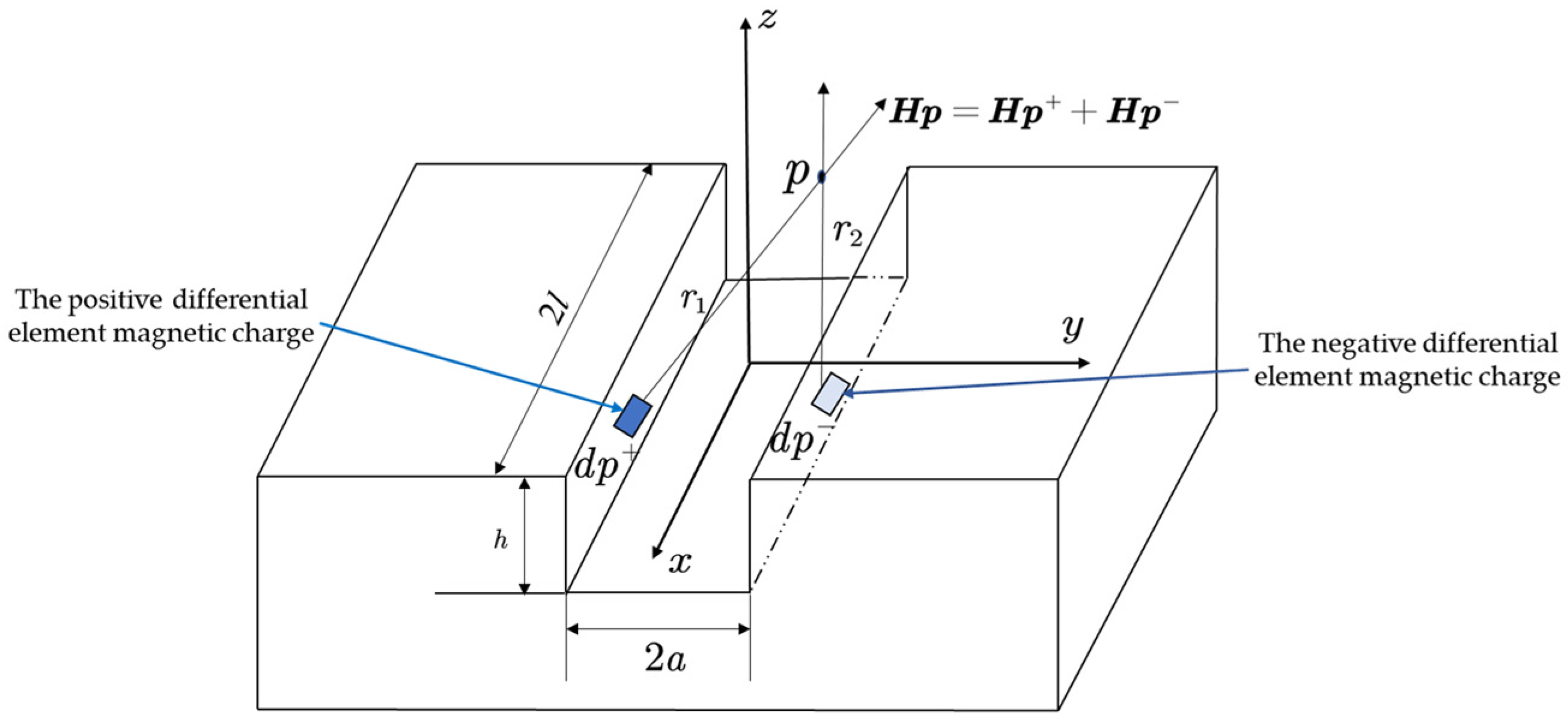
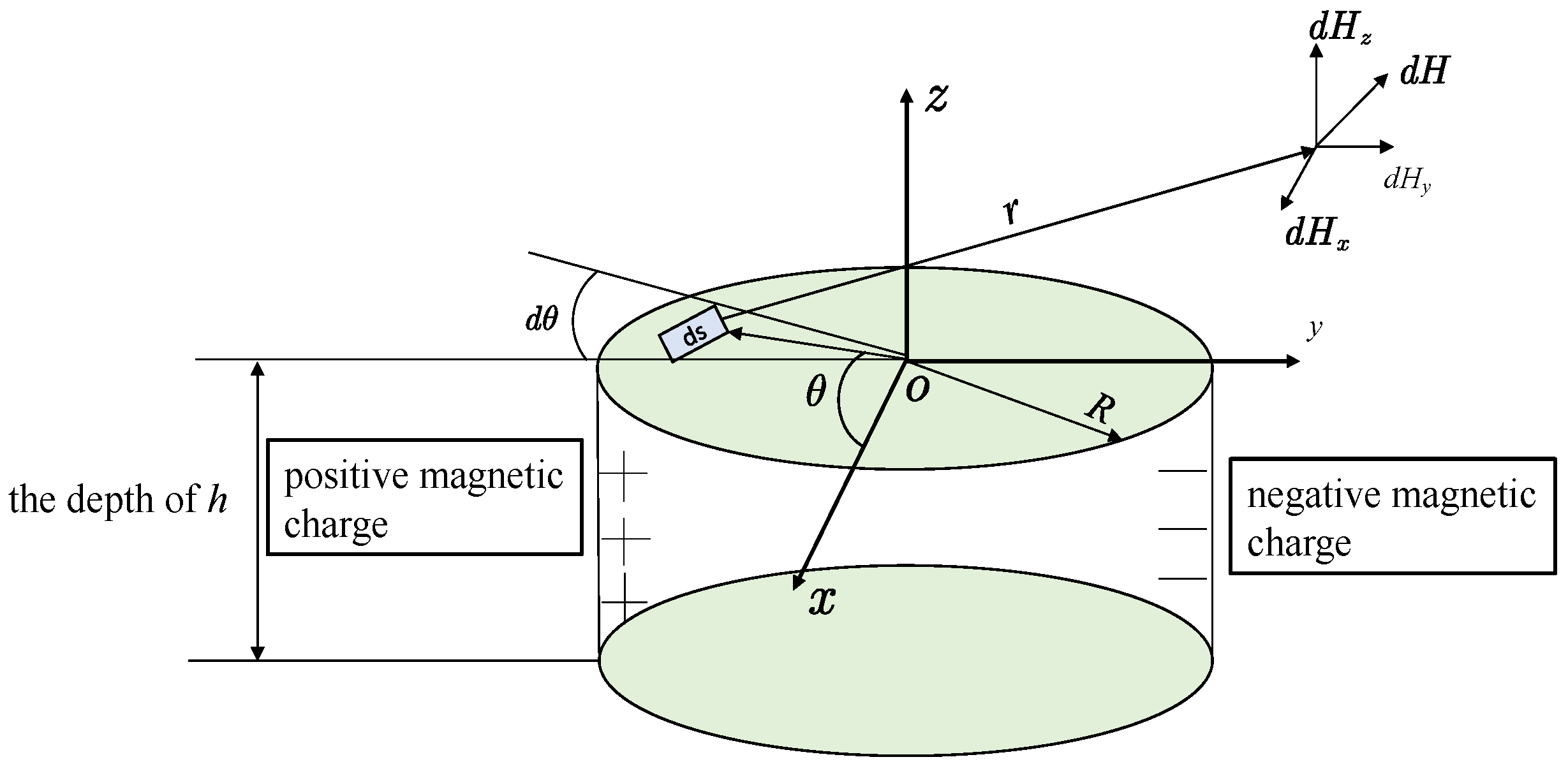


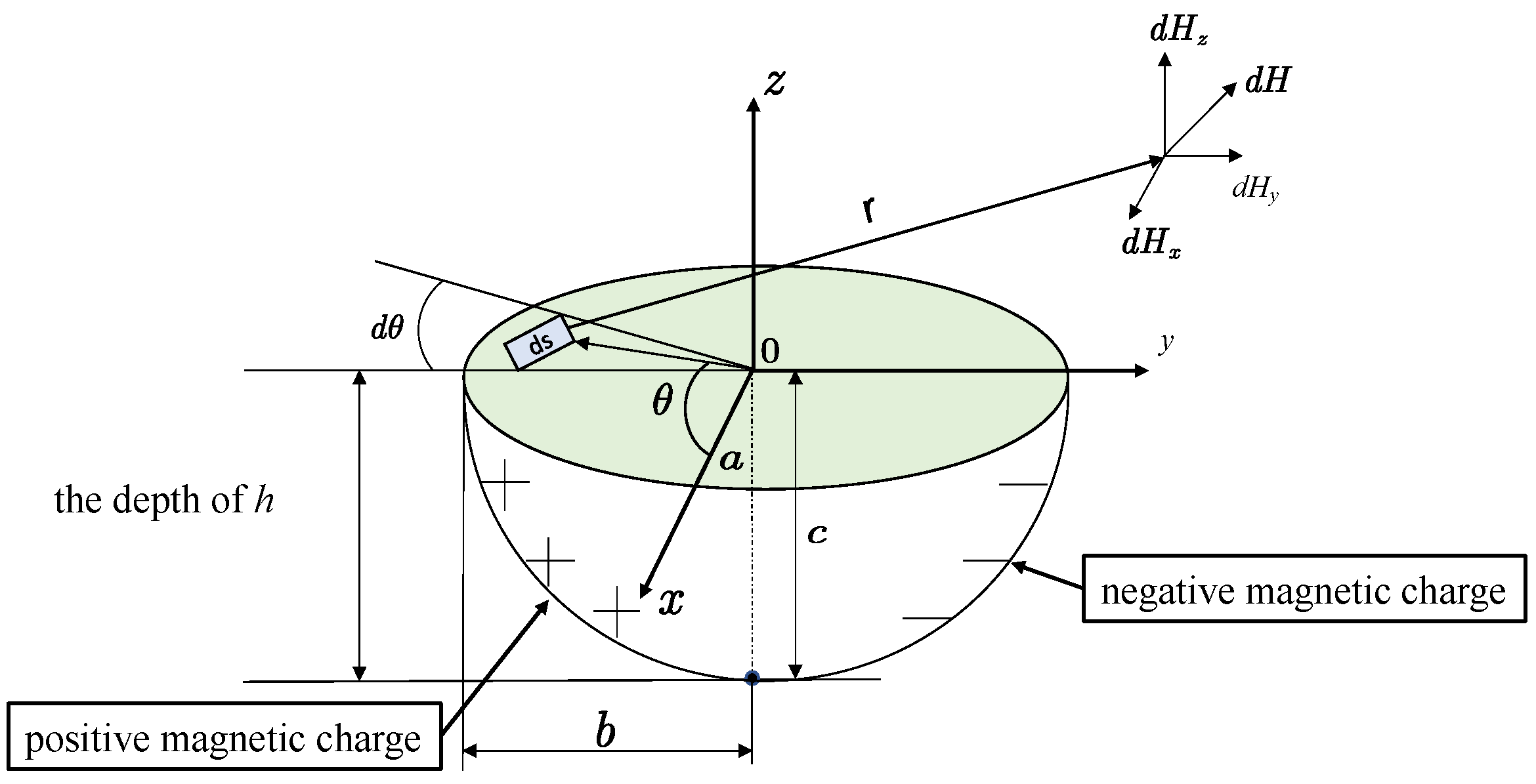
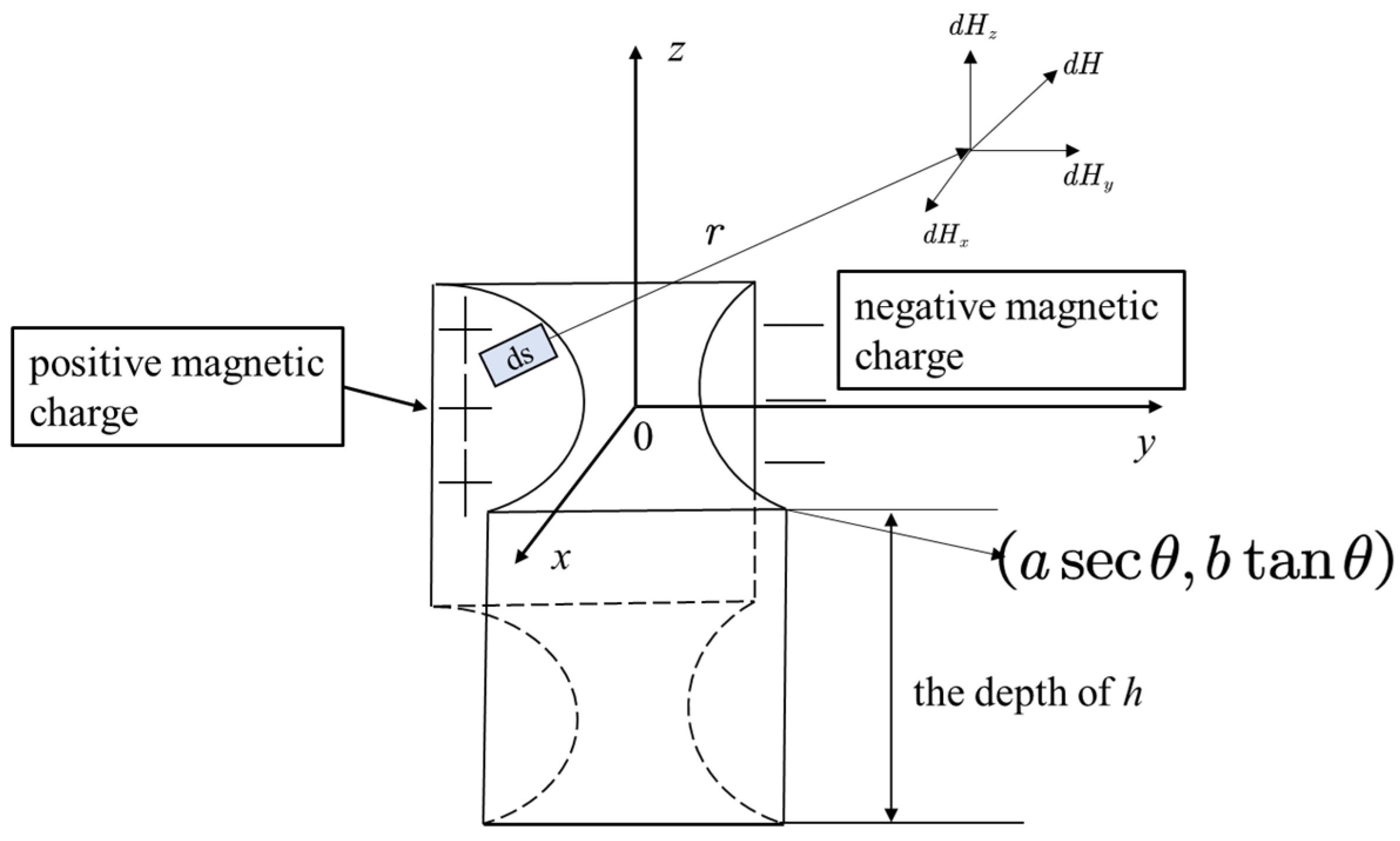
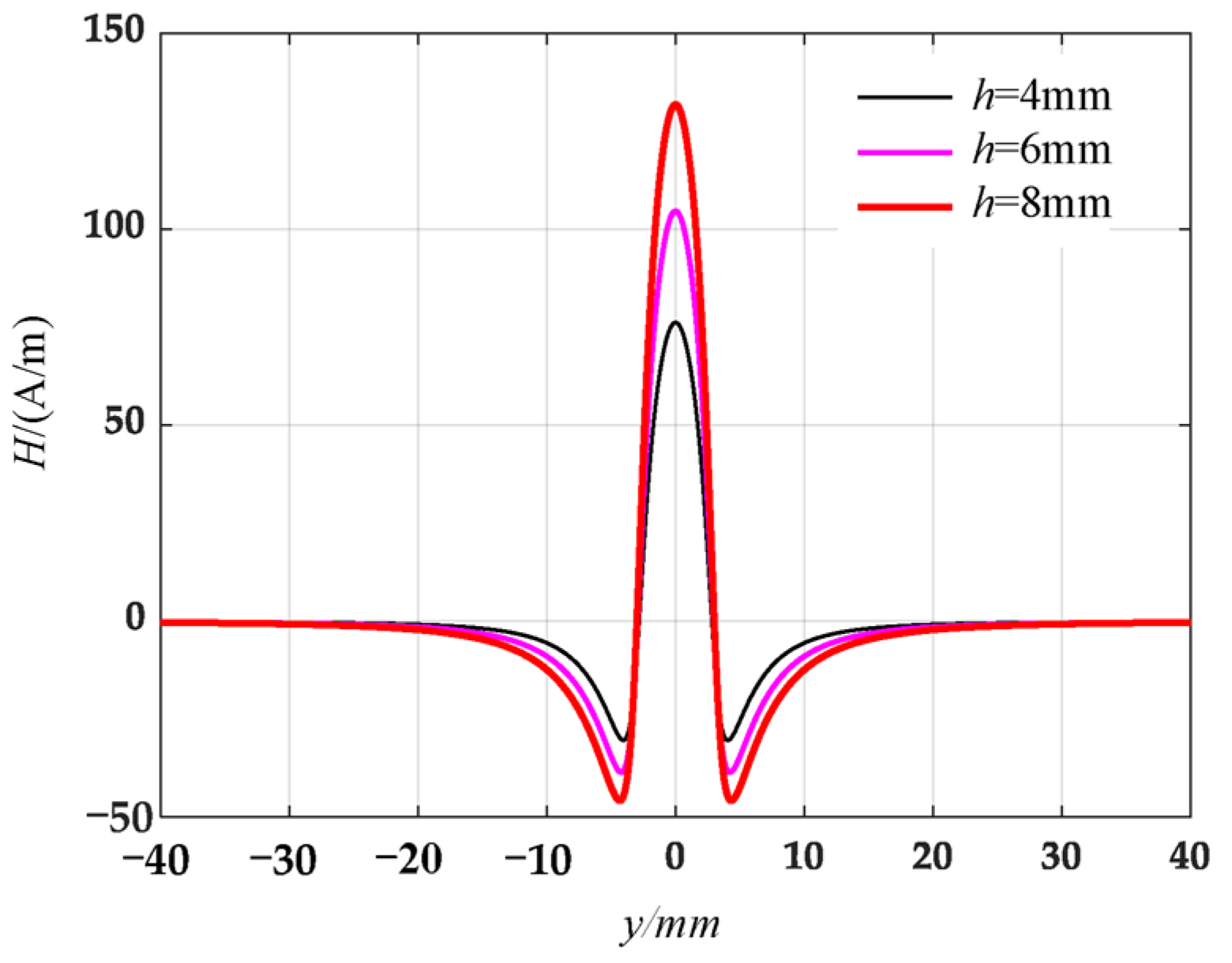


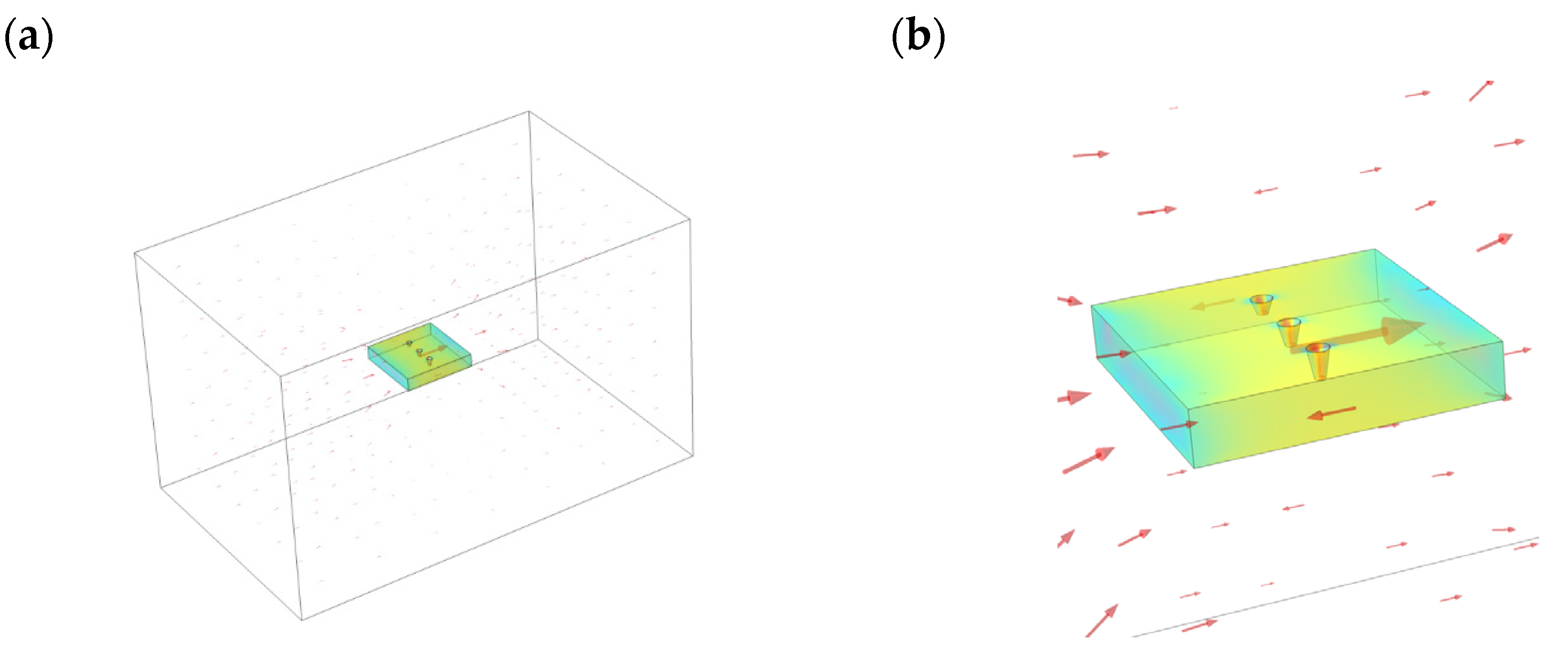


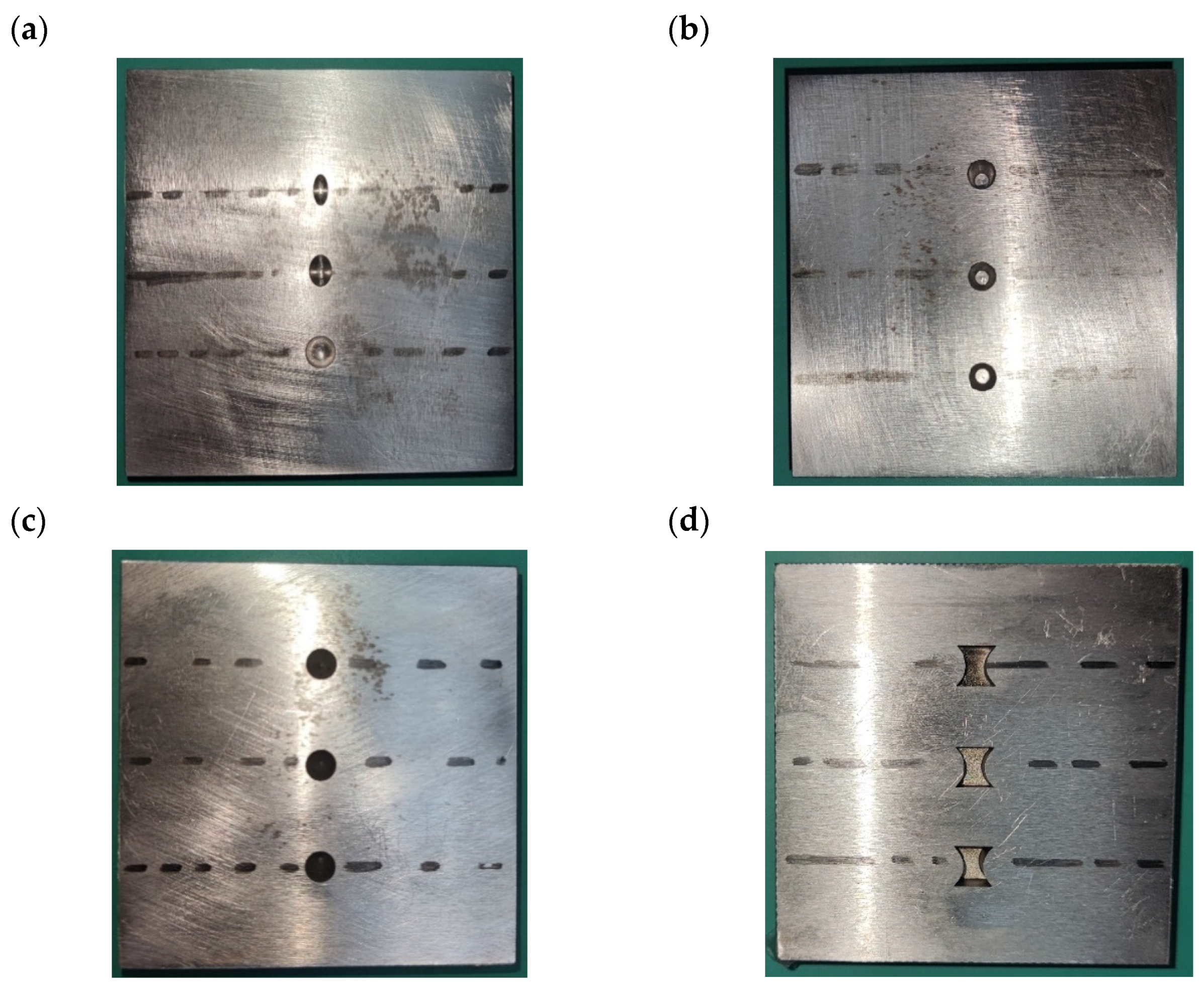

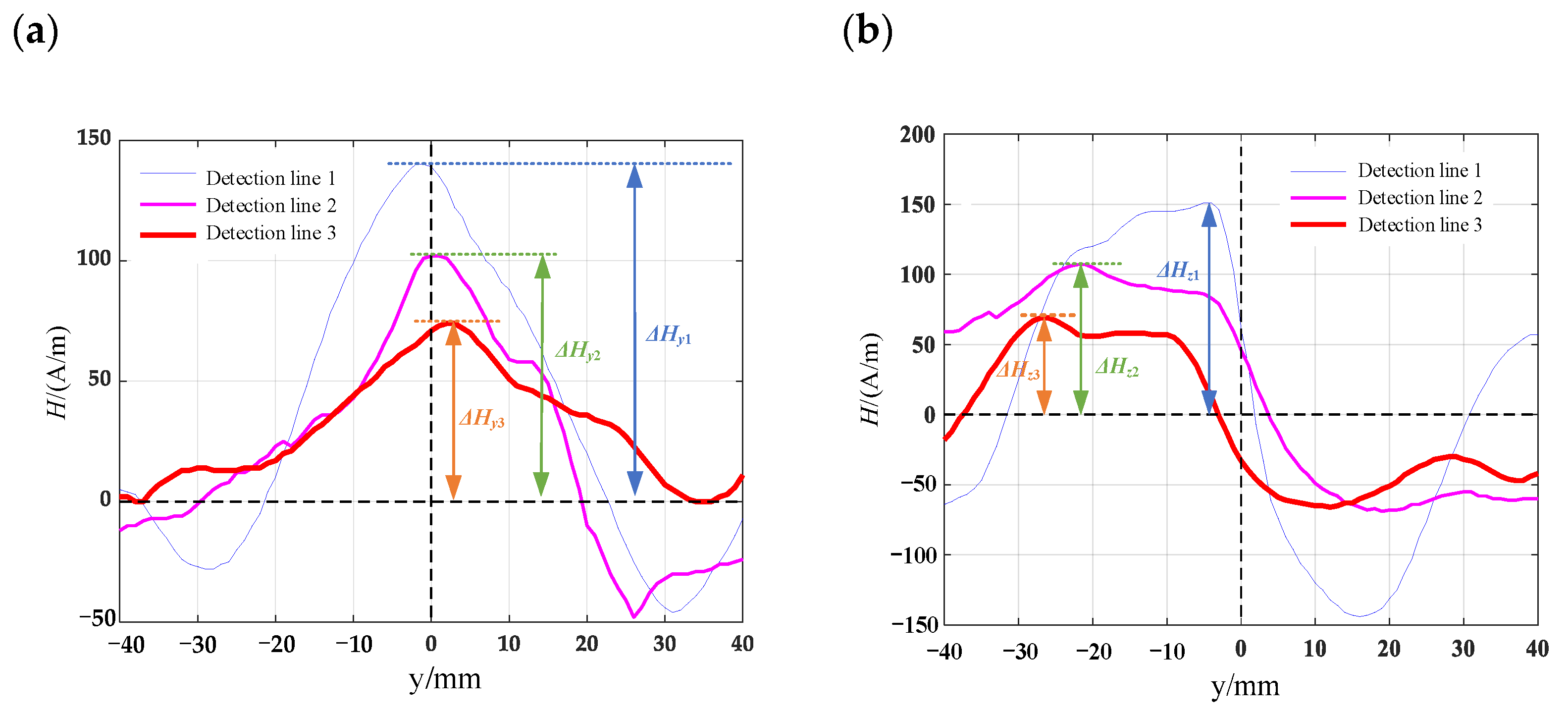
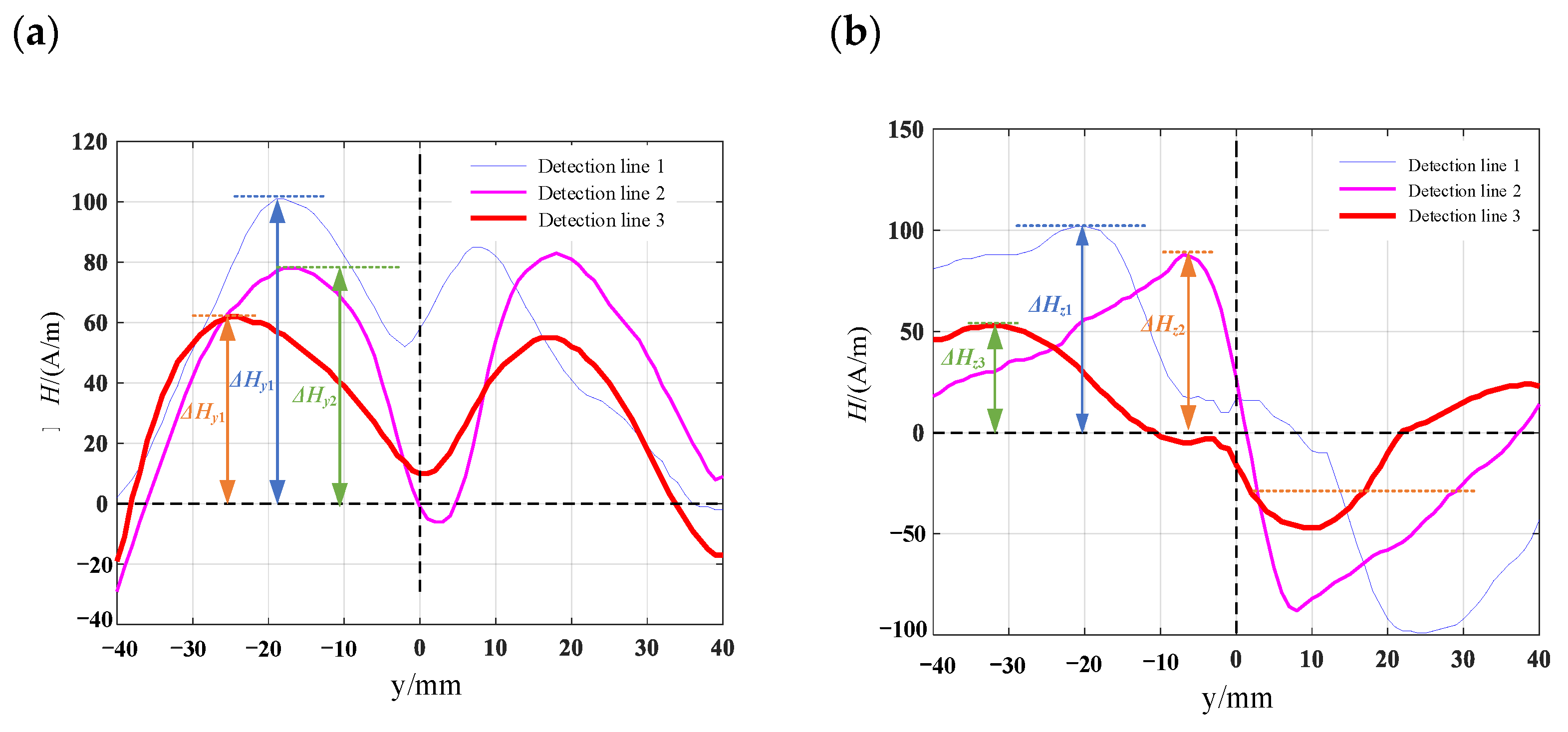
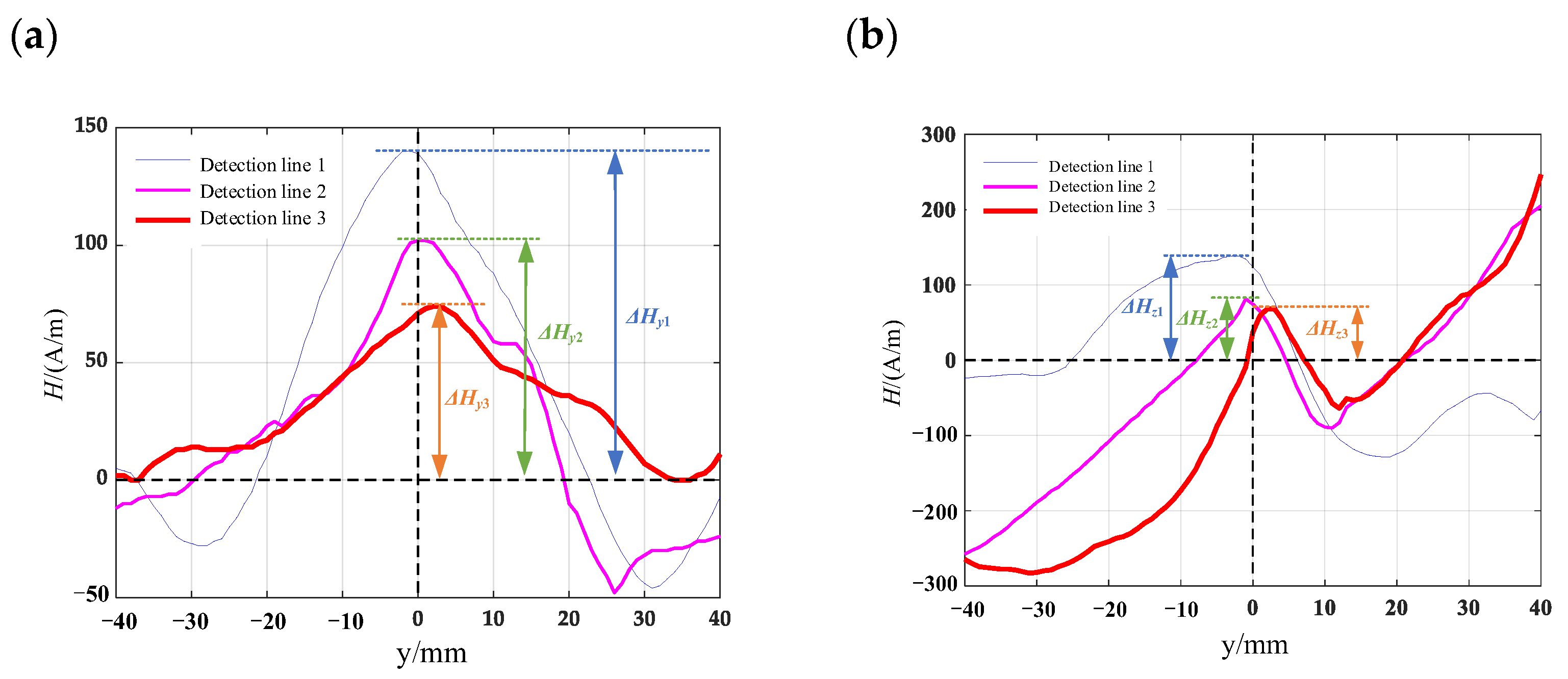
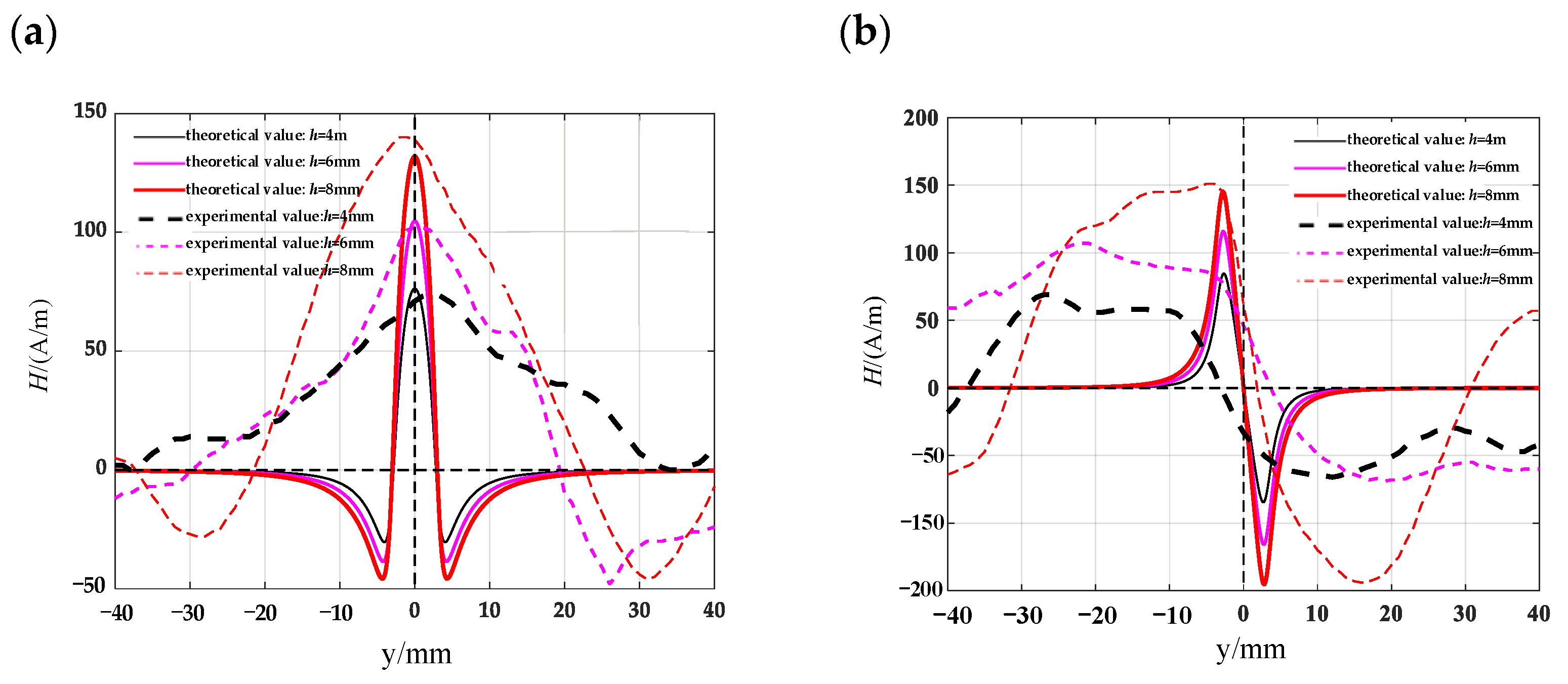

| Element | C | Si | Mn | S | P |
|---|---|---|---|---|---|
| mass fraction | 0.42~0.50% | 0.17~0.37% | 0.50~0.80% | ≤0.035% | ≤0.035% |
Disclaimer/Publisher’s Note: The statements, opinions and data contained in all publications are solely those of the individual author(s) and contributor(s) and not of MDPI and/or the editor(s). MDPI and/or the editor(s) disclaim responsibility for any injury to people or property resulting from any ideas, methods, instructions or products referred to in the content. |
© 2023 by the authors. Licensee MDPI, Basel, Switzerland. This article is an open access article distributed under the terms and conditions of the Creative Commons Attribution (CC BY) license (https://creativecommons.org/licenses/by/4.0/).
Share and Cite
Li, X.; Sheng, G.; Meng, Z.; Qin, F.; Liu, Z. Magnetic Charge Model for Leakage Signals from Surface Defects in Ferromagnetic Material. Materials 2023, 16, 3750. https://doi.org/10.3390/ma16103750
Li X, Sheng G, Meng Z, Qin F, Liu Z. Magnetic Charge Model for Leakage Signals from Surface Defects in Ferromagnetic Material. Materials. 2023; 16(10):3750. https://doi.org/10.3390/ma16103750
Chicago/Turabian StyleLi, Xinyu, Guangming Sheng, Zimin Meng, Fan Qin, and Zhifeng Liu. 2023. "Magnetic Charge Model for Leakage Signals from Surface Defects in Ferromagnetic Material" Materials 16, no. 10: 3750. https://doi.org/10.3390/ma16103750




